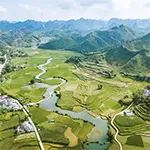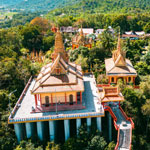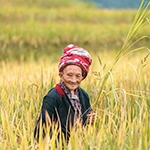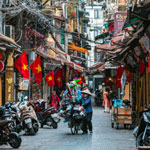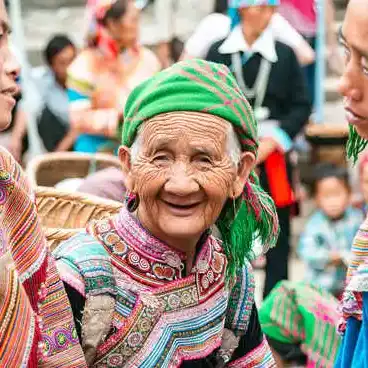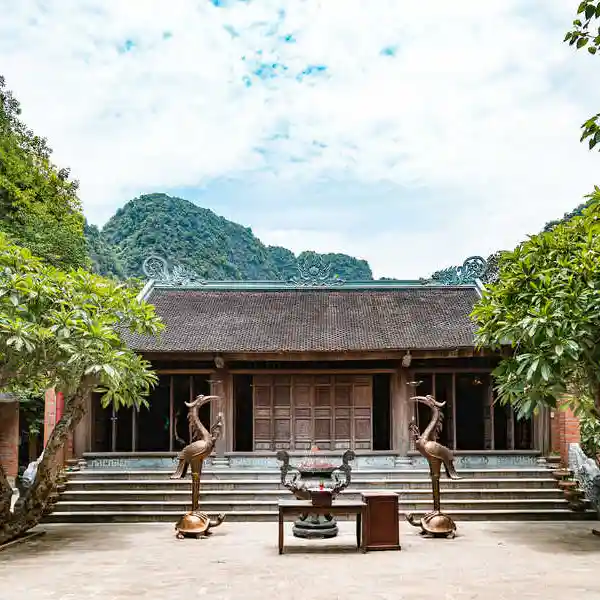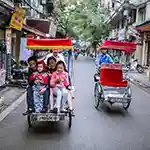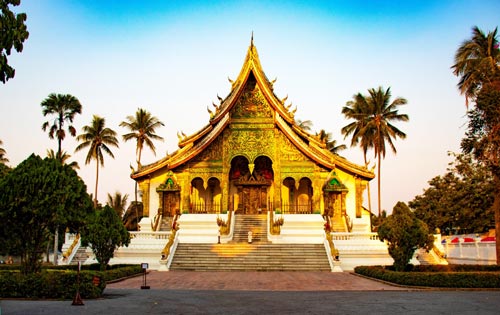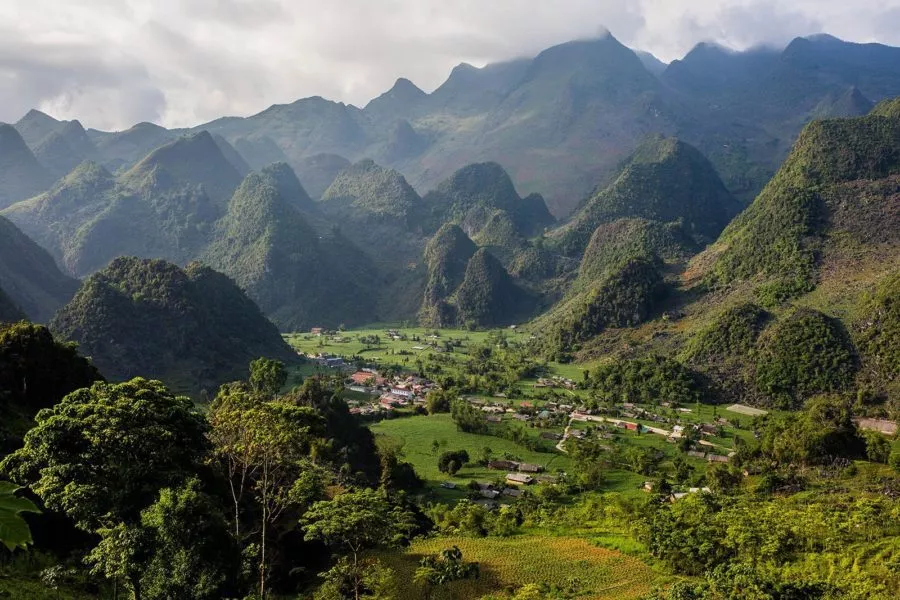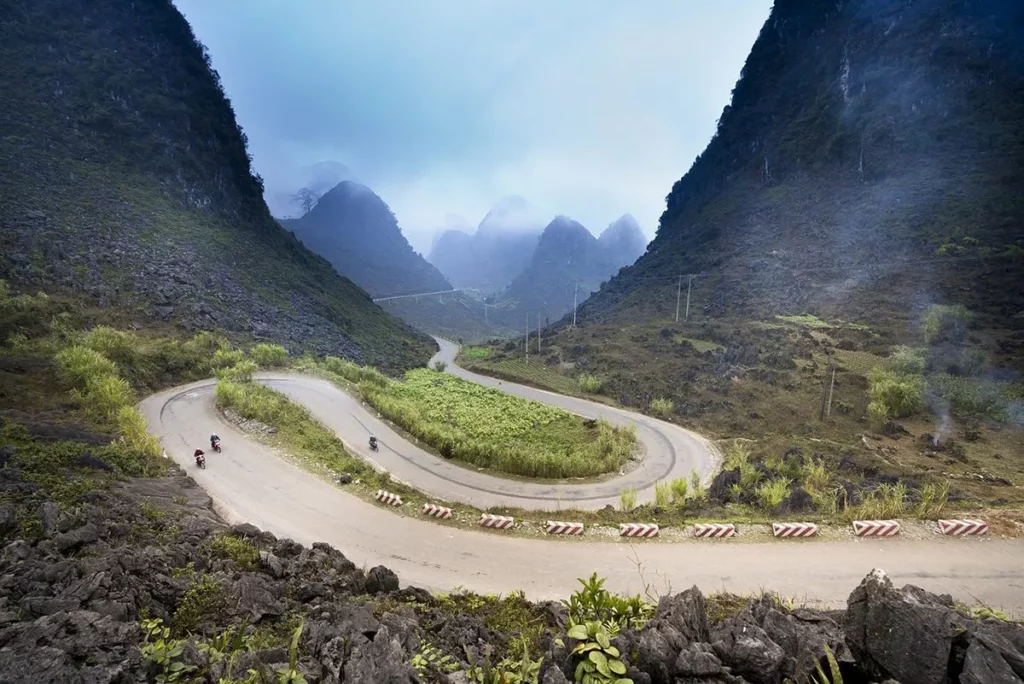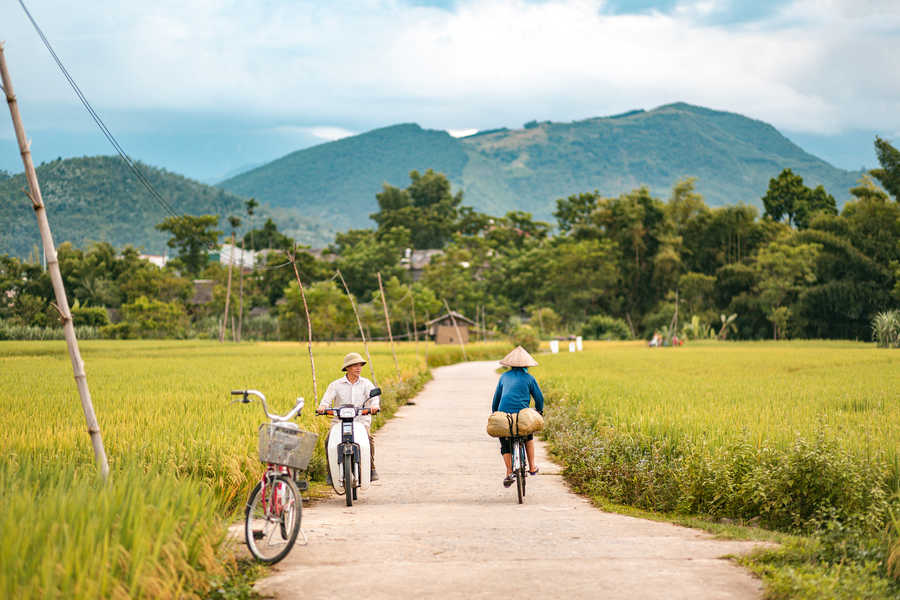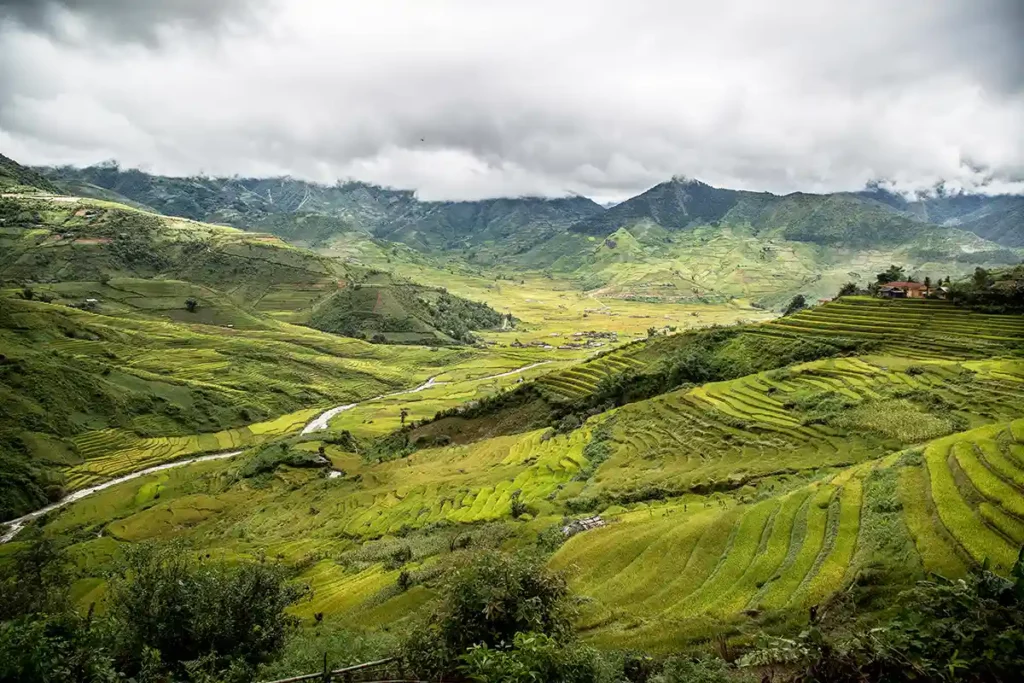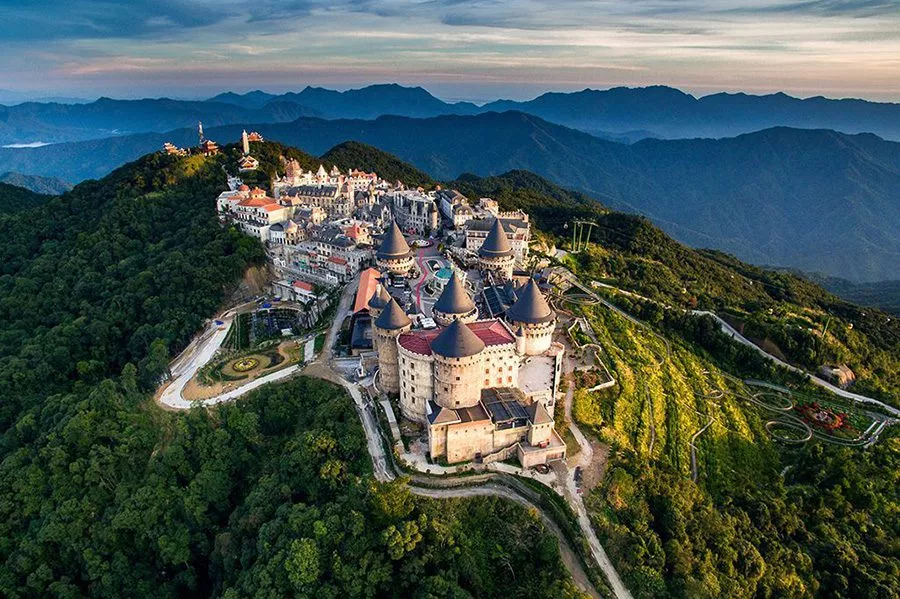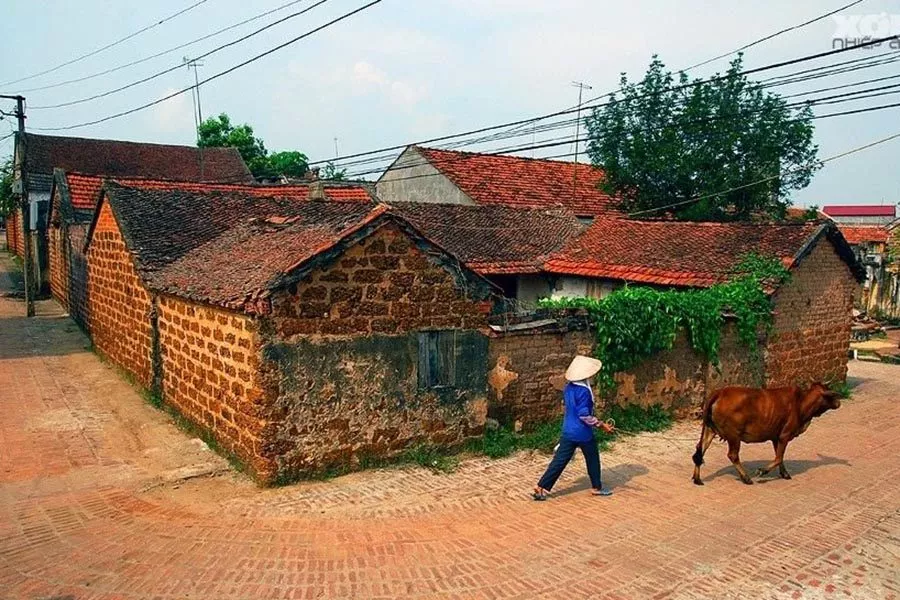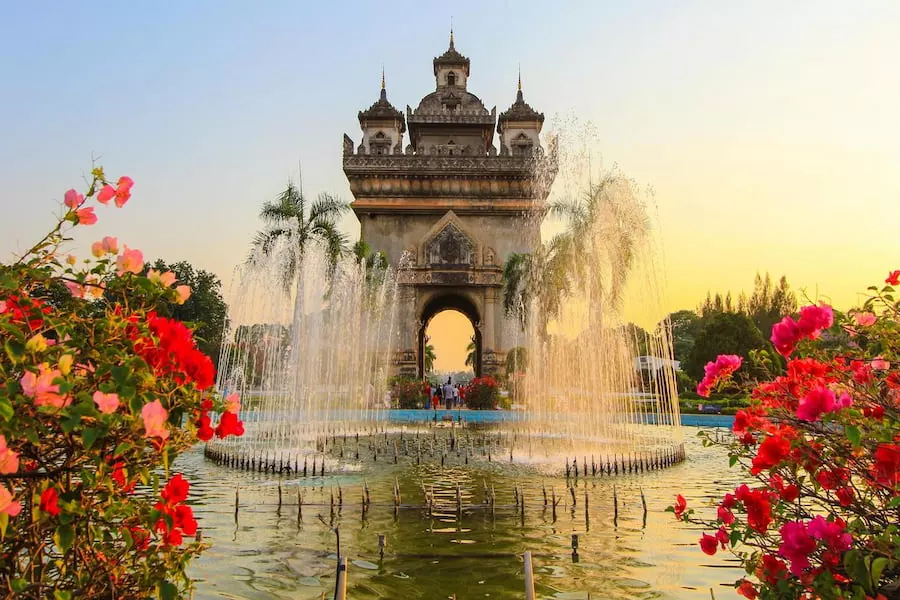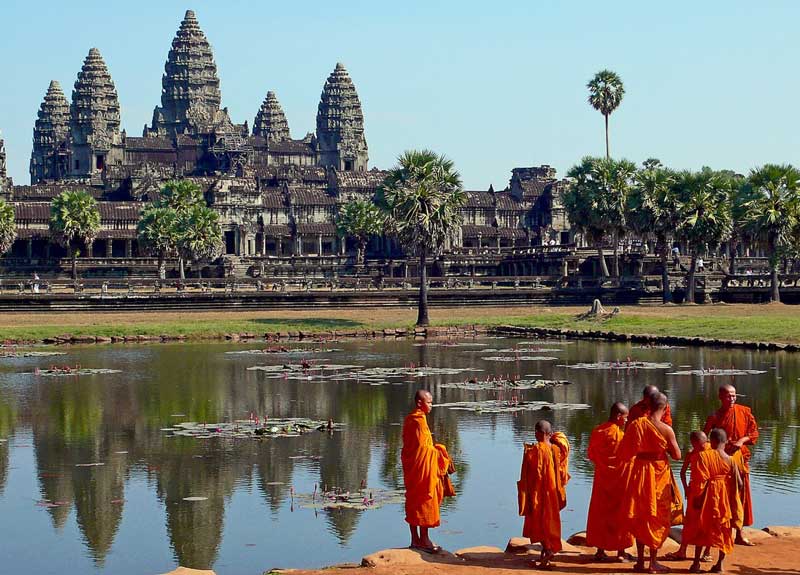Hanoi has plenty to offer for an enjoyable stay: significant historical and cultural sites, excellent food, and traditional markets that are not to be missed!
That’s exactly what we’ll be talking about in this article. As you stroll through these markets, you’ll get a glimpse of local life and commerce — an essential part of everyday activity in Vietnam. Just like the streets of Hanoi’s Old Quarter, the city’s markets are often specialized: you’ll find the wholesale market (Long Bien), the flower market (Quang Ba), and the fabric market (Hom). Other markets, discovered around a corner in the Old Quarter, will also surprise you with their charm.
The craft villages around Hanoi also have their own markets, which we’ll discuss at the end of this article.
Don’t hesitate to contact us to help organize your visits.
Why visit Hanoi’s markets?
Hanoi is exactly the kind of Asian city you might imagine — chaotic yet deeply charming. Its markets are, in many ways, the very symbol of this atmosphere. They are lively hubs of exchange and social interaction, and wandering through them is one of the best ways to truly feel the city’s pulse. Markets are also a paradise for photographers, offering endless opportunities to capture expressive portraits and spontaneous, authentic moments of everyday life.
With more than 8 million inhabitants, Hanoi has no shortage of markets — and we’re here to guide you toward the best ones to explore during your visit.
The general markets in Hanoi
Long Bien night market
Let’s start with a market that you definitely won’t find on the must-see lists in travel guides! The chaotic Long Bien Market, however, offers a fascinating glimpse into the daily life of many Hanoi residents.
Located right next to the Long Bien Bridge, this is a wholesale market where fruits, vegetables, meats, fish, and seafood are sold. Because it’s located in the heart of the capital, the market operates at night to avoid disrupting daytime traffic. It also allows all the street vendors (most of whom are women) to buy their goods before setting off through the city at dawn. As night falls, hundreds of trucks arrive to deliver their produce to the market, creating a lively and bustling atmosphere.
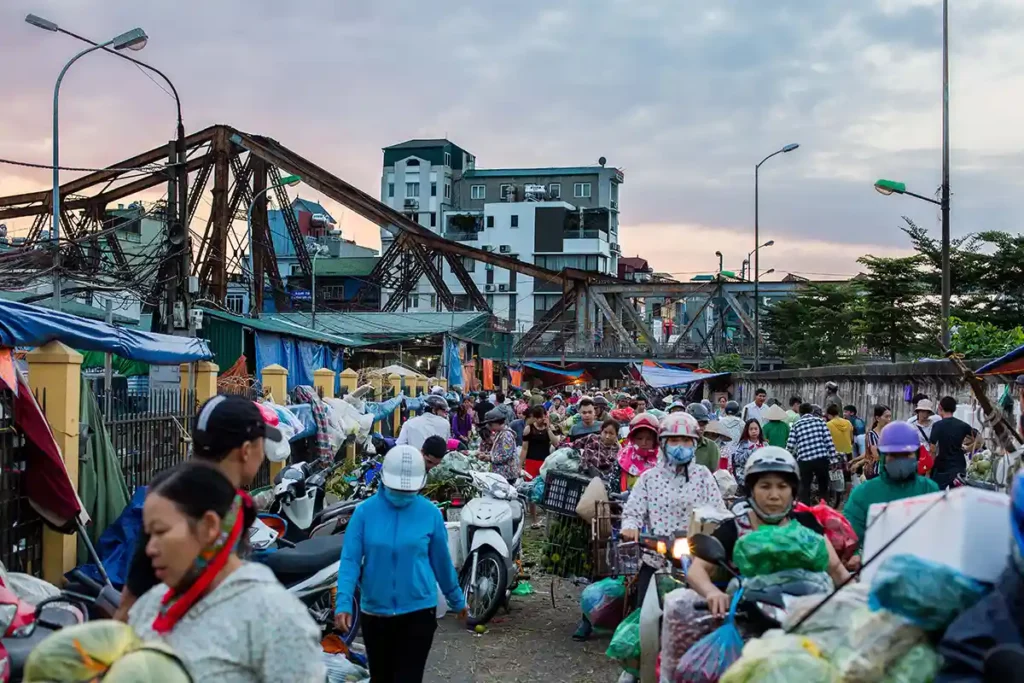
Long Bien Market at dawn
We recommend waking up very early, around 4–5 a.m., to visit the market when it’s at its liveliest! You’ll be amazed by the energy and constant movement — it’s a real anthill where everyone is busy running their own little business.
Practical information
Address: 189 Hong Ha, Phuc Xa, Ba Dinh, Hanoi
Dong Xuan Market (1889)
Located in Hanoi’s Old Quarter, Dong Xuan Market is one of the city’s busiest traditional markets. It’s not only a major commercial hub of the capital but also a cultural symbol of the old town, deeply tied to a part of Hanoi’s history.
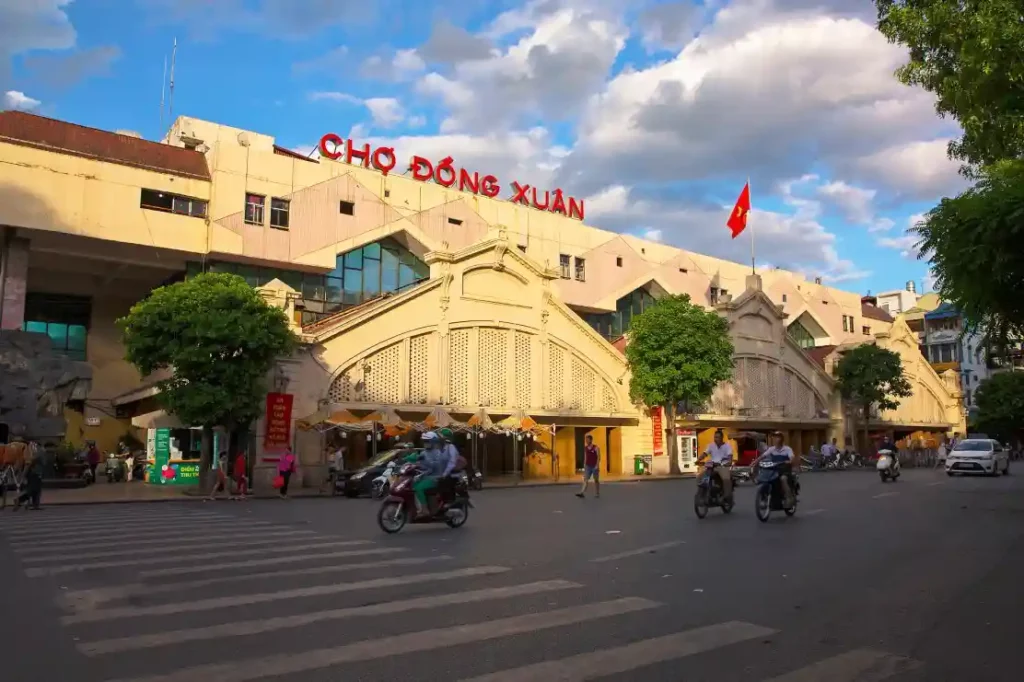
One of the entrances to Dong Xuan market. Photo credit: Mathieu Arnaudet
Dong Xuan Market was built by the French colonial administration in 1889, shortly before the construction of Long Bien Bridge, which facilitated trade between the capital and the villages beyond the Red River. The market later became a site of direct confrontation between the Viet Minh and French colonial forces, with a battle taking place there on February 14, 1947. In 1994, a major accidental fire destroyed much of the market, which had to be rebuilt. Interestingly, the market was reconstructed identically, a sign that the postcolonial government was quick to move beyond its colonial past. Today, it remains the largest covered market in Hanoi, with 14,000 m² of space and around 2,000 stalls.de commerce.
The market and its surrounding streets are filled with countless shops — a lively maze that is a delight to explore!
Practical informations
Opening hours: daily from 6:00 a.m. to 6:00 p.m.
Address: Dong Xuan, Hoan Kiem, Hanoi.
To diversify commercial activities and cater to tourists, the Dong Xuan Night Market was created in 2003.
The old quarter night market
While strolling around Hoan Kiem Lake on weekend evenings, it’s hard to miss the bustling night market, known as the Dong Xuan Night Market. Hang Dao Street becomes Hanoi’s longest pedestrian street, stretching for about 3 kilometers between Hoan Kiem Lake and Dong Xuan Market.
Aimed at promoting Vietnamese culture to both foreign visitors and the younger Vietnamese generation, this market also serves as a living display of Hanoi’s past cultural life and activities. The pedestrian market is open from 7 p.m. to 11 p.m. on Friday, Saturday, and Sunday evenings, featuring over 3,000 stalls run by small local vendors selling food, clothing, accessories, everyday goods, souvenirs, and handicrafts. Along this lively street, you’ll also find local artists ready to sketch your portrait on the spot.
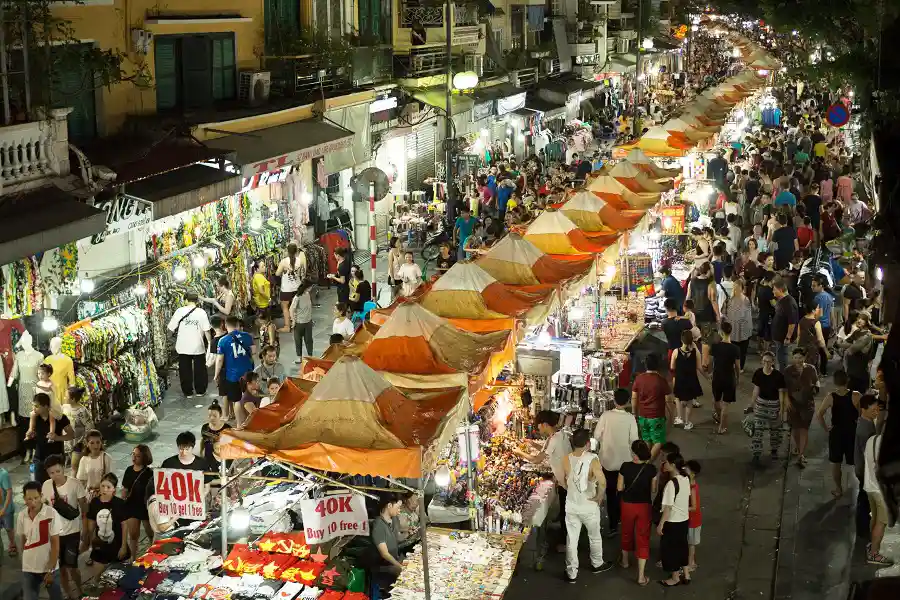
Hanoi night market, Vietnam
A must-do to soak up the warm and cheerful weekend atmosphere of Hanoi — but best avoided if you don’t like crowds!
Practical information
Adress: Hang Dao, Hoan Kiem, Hanoi
Opening hours: from 7:00 p.m. on Fridays, Saturdays, and Sundays
Hang Da Market
Hang Da Market is located on the street of the same name, just a few hundred meters from Hoan Kiem Lake. It’s easy to recognize thanks to the large clock fixed to the center of its façade. When it was built, the developers probably hoped to make it into a grand shopping gallery… While the façade with the name remains, the interior is quite different from today’s modern malls!
The building has three levels: The ground floor sells fresh products such as fruit and meat. On the first floor, you’ll find many stalls selling spirits and alcohol. The third floor is the closest thing to a shopping gallery, with various clothing shops. You can even have your own ao dai, the traditional Vietnamese dress, custom-made there.
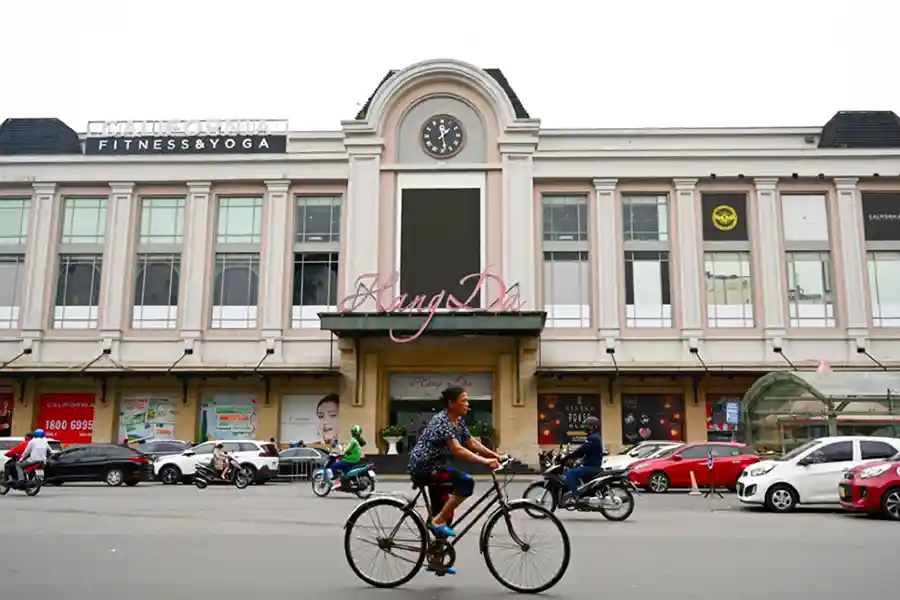
Hang Da market, Hanoi, Vietnam
Ngo Si Lien market
Ngo Si Lien Market is located in the Dong Da District of Hanoi. Like many other markets in the city, it provides everyday goods for local residents. Here, you’ll find everything you need — food, clothing, fruits, flowers, and more. It’s a typical traditional northern Vietnamese market.
However, this market has a unique feature: the famous “bun chui” restaurant, which serves a special noodle dish. The word “chui” means “to scold” or “to insult,” referring to the… rather fiery personality of the lady who runs the place! Originally located in a small corner inside the market, the eatery later moved across the street as its popularity grew. Today, the nickname “bun chui” is closely associated with Ngo Si Lien Market itself.
If you get the chance to visit Ngo Si Lien Market, don’t forget to stop by this legendary noodle shop for a taste of Hanoi’s colorful street food culture!
Practical informations
Ngo Si Lien Market is located next to Hanoi Railway Station, and also near the Temple of Literature.
Adress: 14 Nguyen Nhu Do Street, Van Mieu, Dong Da, Hanoi.
Hanoi’s Special Markets
Quang Ba Flower Market
Flowers hold a special place in Vietnamese culture. They are ever-present during the country’s traditional festivals, found in abundance on the bicycles of street vendors and in local markets. The main flower market in Hanoi is Quang Ba, located on Au Co Street, near West Lake.
Just like the Long Bien Market, you’ll need to get up early—or stay up late—to see the Quang Ba Flower Market at its liveliest.
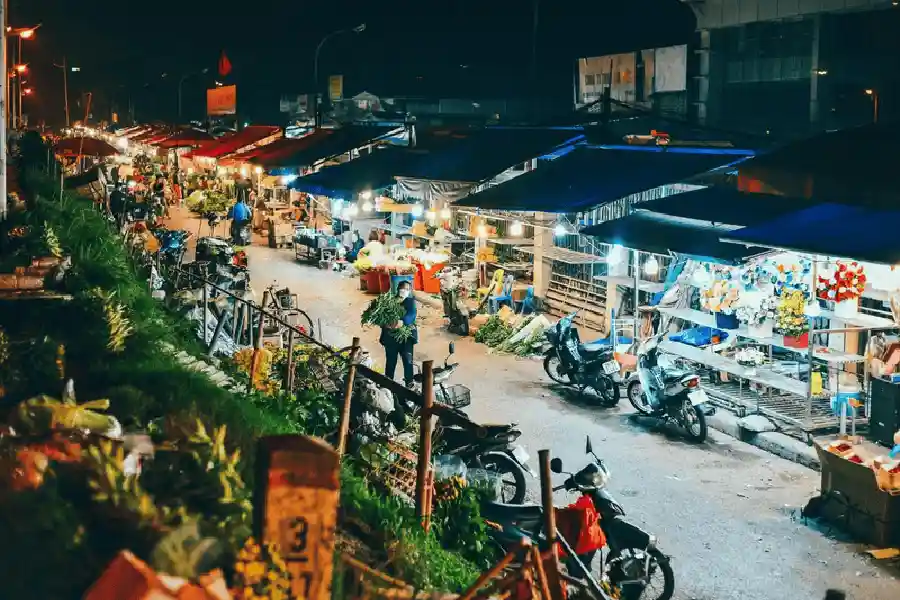
Quang Ba flower market
It is, of course, just before the Vietnamese New Year (Têt) that the Quang Ba market is at its liveliest. Many people come to buy flowers, but some come simply to soak up the festive atmosphere. You can also eat there — especially breakfast!
Practical information
Adress : 263 rue Au Co, Quang An, Tay Ho, Hanoi.
Hom fabric market
The quality of Vietnamese fabrics is highly appreciated. You will find the widest possible selection at Hom Market. It’s a unique covered market: on the ground floor, there’s a motorbike parking area and a fruit and vegetable market. Upstairs, numerous vendors display their fabrics in tiny stalls. Children will enjoy wandering through the narrow aisles.
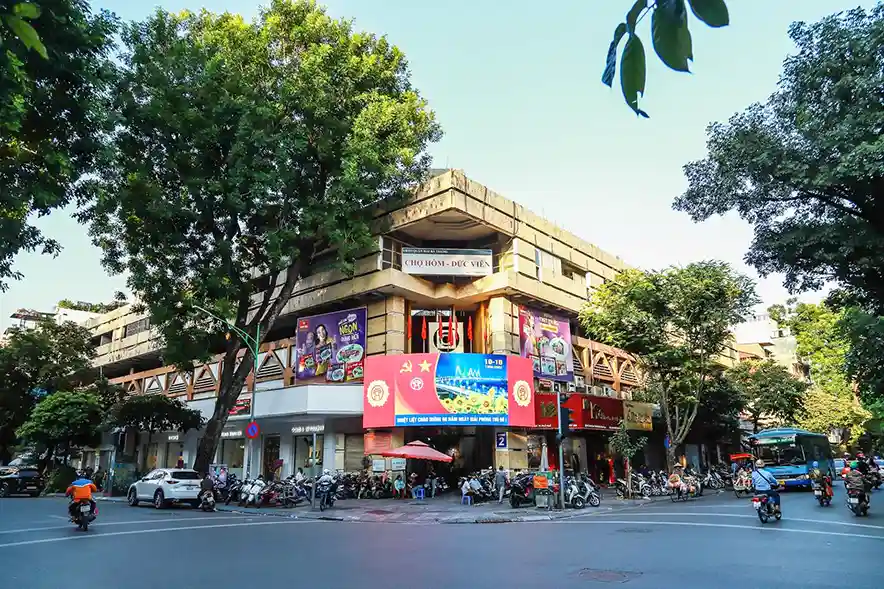
Practical Information
Adress: 293 Tran Nhan Tong, Hai Ba Trung District, Hanoi
Hang Ma Street — The Market for Votive Offerings
If you visit Hanoi, don’t miss a walk along Hang Ma Street, located in the Old Quarter. It’s not exactly a market, but rather a specialized street, much like the many traditional craft streets that once filled central Hanoi.
For nearly 500 years, street vendors here have been selling paper-made products used in traditional celebrations such as the Month of the Dead, Lunar New Year, and the Mid-Autumn Festival. These paper items are burned as offerings to ancestors and spirits.
Today, vendors have diversified and modernized their offerings! You can now find children’s toys year-round, Halloween pumpkins as the American holiday approaches, and Christmas decorations toward the end of the solar year.
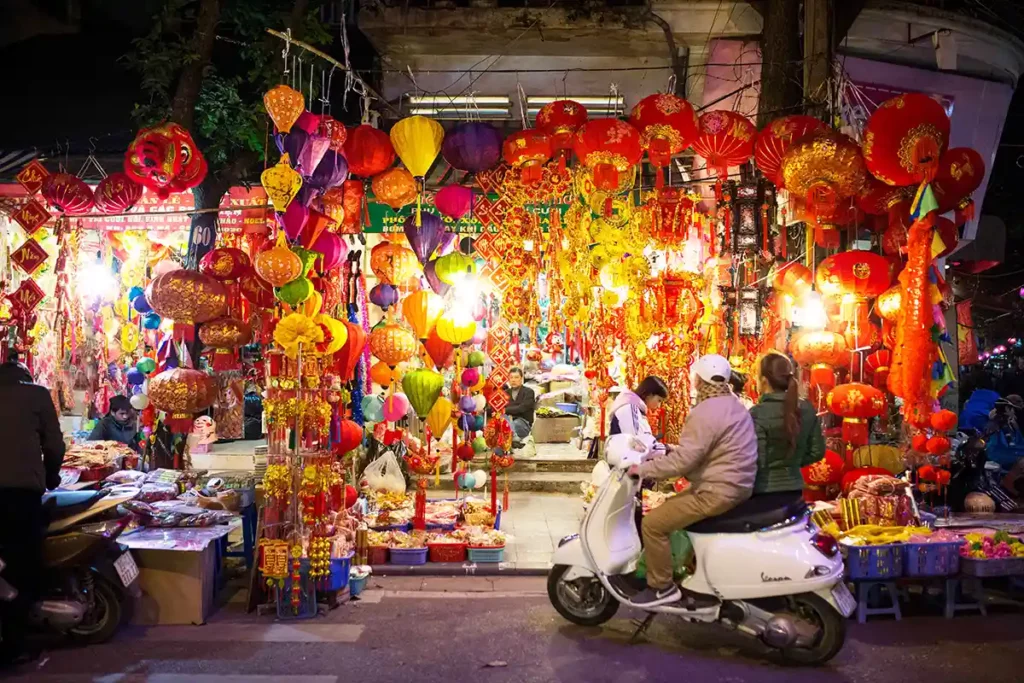
The colorful Hang Ma Street in Hanoi before Têt. Photo credit: Mathieu Arnaudet
Traditional village markets around Hanoi
Bat Trang ceramic market
Ceramics are among the most iconic crafts of the Red River Delta — so much so that in 2010, the Hanoi authorities created the world’s longest mosaic, stretching over 4 kilometers along the dyke wall that protects the city center from the Red River’s floods.
To discover this craft, we recommend visiting the village of Bat Trang, the most famous one. A few years ago, a large market was established where most of the village’s producers gather. This market is open all year round but is especially lively during the village festival, held on the 14th and 15th days of the lunar calendar (March 2020).
The village opens the doors of its workshops, and you can even try your hand at making small pottery items.
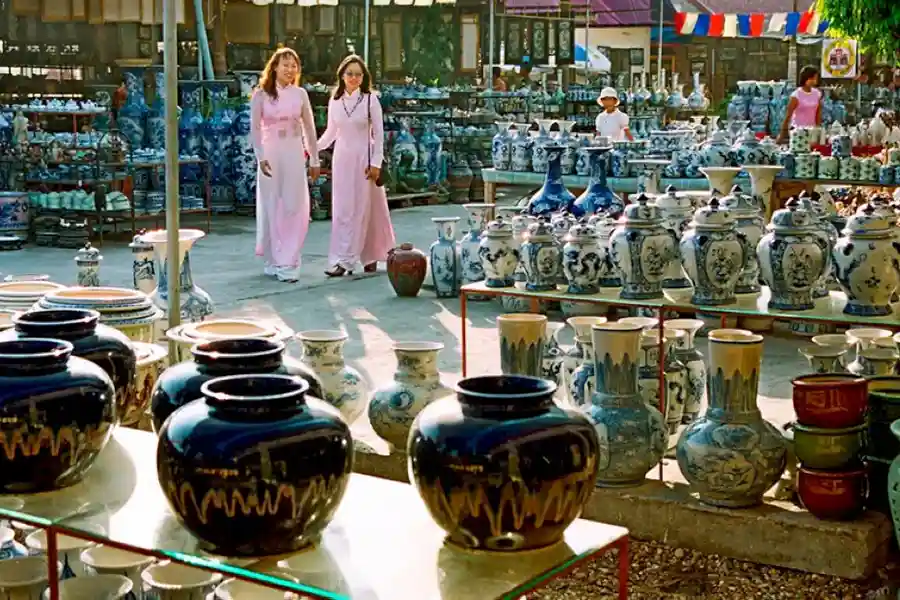
Bat Trang pottery market, near Hanoi
Van Phuc silk market
In the south of Hanoi, in the Ha Dong District, lies the village of Van Phuc, renowned for its silk production and garment making. It was in the 19th century, under the Nguyen dynasty, that the villagers refined their techniques — a tradition that continues to make their reputation today. At that time, their products were reserved for the elite of society: royalty, mandarins, nobles, and the wealthy.
During the French colonial period, Van Phuc silk began to be exported throughout the region and to Europe, gaining international recognition. Today, it remains a prestigious brand, promoted by the Van Phuc Artisans’ Association, which works to preserve and showcase this ancestral craft.
When visiting Hanoi, make sure to explore this charming village and browse the shops displaying exquisite silk fabrics and garments.
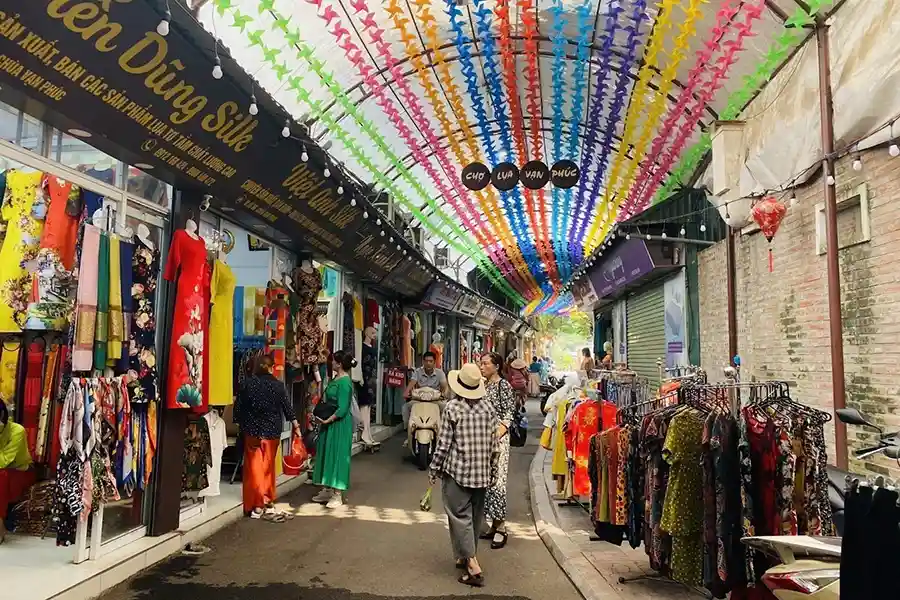
Silk fabrics from Van Phuc village
The Chuong Conical Hat Market (Thanh Oai commune)
The village of Chuong is famous throughout the country for the production of traditional conical hats. However, if you want to visit and see the women making these hats, you’ll need to choose one of the following five days: the 4th, 10th, 14th, 20th, and 24th days of the lunar month.
On these days, the Chuong hat market becomes lively and bustling, filled with buyers and sellers gathered around the village’s communal house.
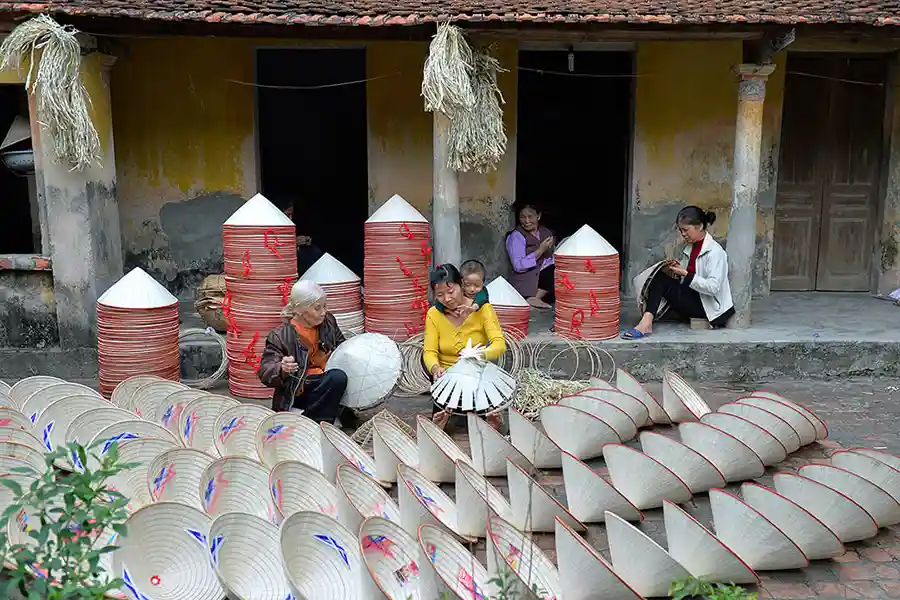
Woman making conical hats in Chuong Village
You now know the most interesting markets to visit in and around Hanoi. All that’s left is to choose the ones that appeal to you most.
Our agency is here to organize a private tour to help you discover these authentic markets and immerse yourself in the vibrant local atmosphere.

